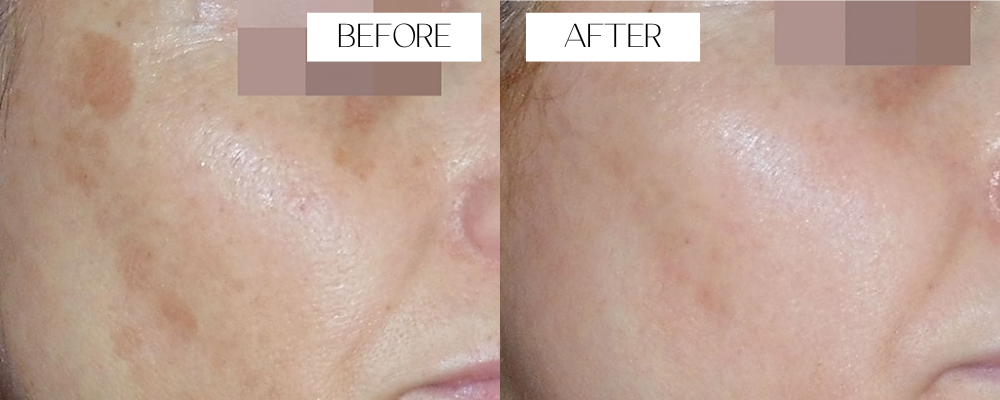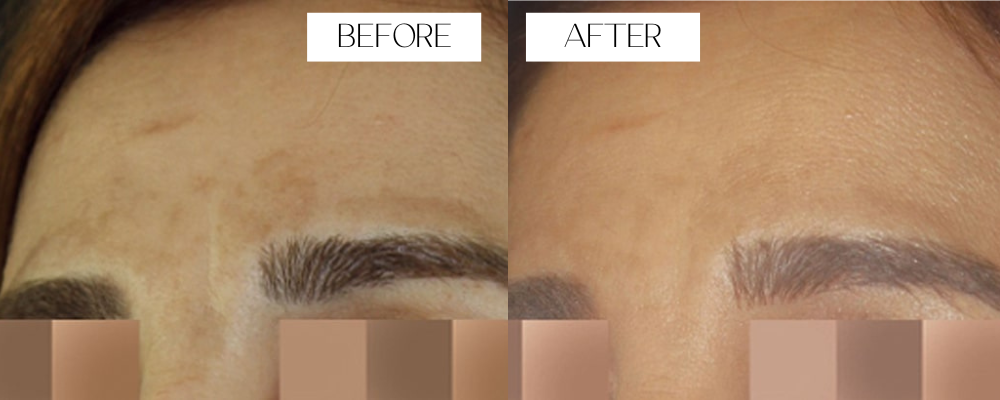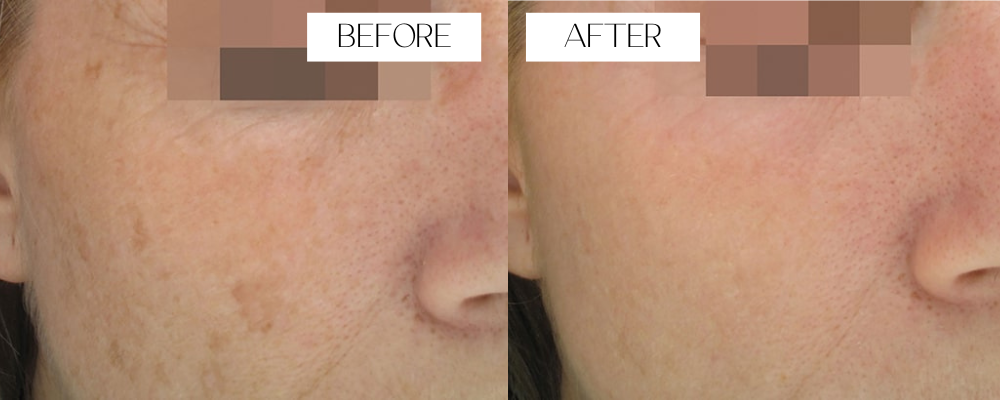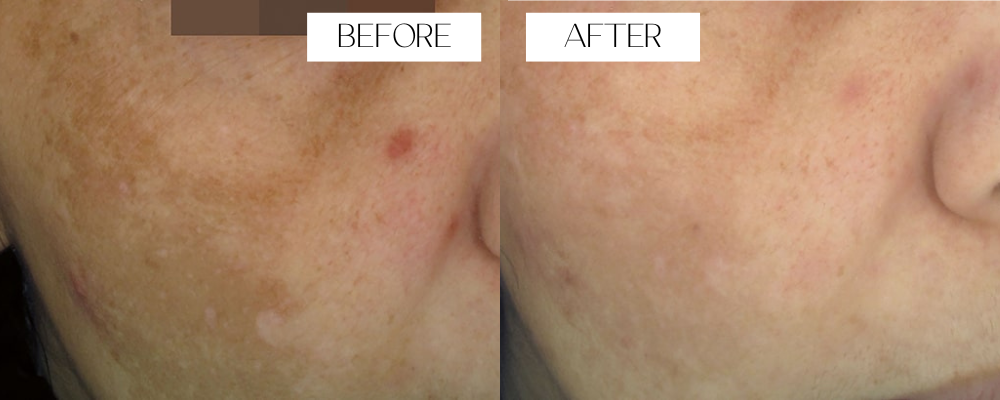
Cosmelan De-Pigmentation Treatment - $1,650
Introducing Cosmelan by Mesoesetetic® - the forefront of skin treatment programs, renowned for its exceptional ability to brighten and even out skin tone while effectively preventing their reappearance.
The secret lies in its exclusive blend of active ingredients, acting as an enzymatic force within the melanocyte to effectively correct and regulate melanin production.
By inhibiting the activation of tyrosinase, Cosmelan significantly reduces melanin synthesis, resulting in visibly clearer, brighter, and more radiant skin.
This treatment involves three medical LED sessions, complemented by a tailored home skincare regime to ensure long-lasting and outstanding results.
Cosmelan Results
All You Need To Know About Cosmelan
What kinds of pigmentation can Cosmelan treat?
Cosmelan is a highly versatile treatment capable of addressing various forms of hyperpigmentation arising from excessive melanin production, which can be triggered by factors such as hormonal changes, sun exposure, genetic predisposition, or scarring. With remarkable efficacy, Cosmelan effectively combats melasma, post-inflammatory hyper-pigmentation (PIH), and freckles (sun spots).
Are there any side effects to Cosmelan treatment?
When used properly and under the guidance of your Skin Specialist, Cosmelan should not produce any side effects.
Cosmelan is a topical treatment, making it minimally invasive and allowing you to continue with your regular daily activities without disruption. During the initial phase and immediately after the treatment, some skin irritation or redness may occur.
These reactions are completely normal and expected, and they typically subside within a few days. In the home treatment phase, you may experience mild peeling and sensitivity, which are typical symptoms that fade away when you use the home products recommended by your skin specialist. Following their instructions will help you manage and alleviate any temporary discomfort effectively.
When can I expect to see results?
The initial weeks of treatment yield the most significant changes, with noticeable improvements in skin texture and a visible reduction in pigmentation. However, it's crucial to be aware that these changes might create a misleading sense of success.
During this phase, melanin is removed from the outermost skin layers, resulting in a faded appearance of pigmentation and smoother, softer skin. Yet, the underlying issue remains unaddressed—the melanocyte, responsible for melanin production, continues to function uncontrolled and produces excess pigment.
To effectively manage this overproduction, it is essential to maintain a consistent home treatment with a regulating action. This ongoing regimen is vital to prevent the reappearance of pigmentation and gain long-term control over the melanin production process.
Can I combine Cosmelan with other de-pigmentation treatments?
During at least the first three months of the method, it is not recommended to use any other type of minimally invasive treatment that can cause a skin lesion, as well as peels, microneedling, exfoliations, etc., as it can even cause repigmentation. It is advisable to use soothing and regenerating treatments both in clinic and at home in case it is needed.
Will the treatment disrupt my daily life activities?
Since it is a non-invasive treatment, it won't hinder your ability to carry out your daily activities normally. However, caution should be exercised during the initial days after treatment, as your skin adapts to the process.
During this period, it is advisable to refrain from certain activities, such as swimming in pools, extended sun exposure, and engaging in activities that cause excessive sweating. By being mindful of these precautions, you can ensure optimal results and enhance the effectiveness of the treatment.
When is the best time of year for treatment?
Cosmelan treatments can be conducted at any time of the year, provided that you can ensure the treated area is shielded from prolonged and intense sun exposure. For optimal results and safety, it is recommended to schedule the treatment during autumn and winter when sun exposure is typically reduced.
In cases where sun exposure cannot be completely avoided, extra precautions must be taken. This includes the diligent application of a high SPF sunscreen and minimising the time spent outdoors to a minimum. Taking these precautions will help maintain the effectiveness of the treatment and safeguard your skin from potential adverse effects of sun exposure.
Can pigmentation return after treatment?
Following your professional in-clinic treatment, excess pigmentation can be visibly reduced. Nevertheless, it's important to recognize that this process is dynamic, and an underlying imbalance can lead to their recurrence. Therefore, even if the spots are not currently visible, it is crucial to maintain a daily depigmentation treatment and consistently use photoprotection throughout the year to prevent any chances of pigmentation reappearing. This proactive approach will help to sustain the results achieved and maintain an even complexion over time.





